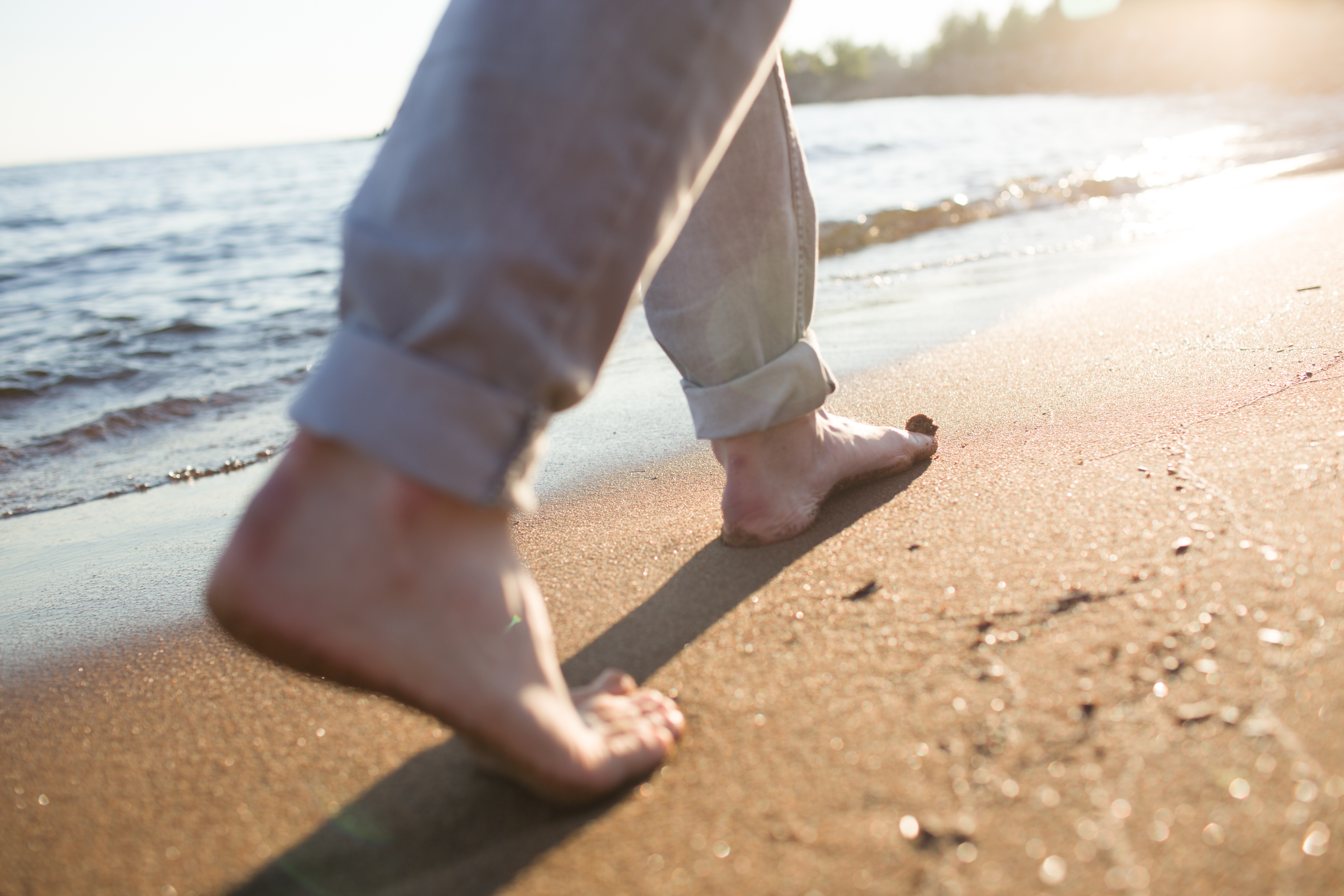Navigating the world of foot types is like navigating a maze in the dark. You know of terms like 'high arch feet' and 'flat feet,' but do you know how they can influence your overall health? Understanding the biomechanics of your feet is vital to evade common problems, choose the right footwear, and seek appropriate treatment if needed.
With a few more steps into this conversation, you'll uncover the mysteries of your foot type and its impact on your well-being. Are you ready to step up to better foot health?
Understanding Foot Types
Diving into the world of foot types, it's important to know that flat feet and high arch feet are the two primary types, each with its own distinct biomechanics and potential issues. You're more likely to have flat feet, a condition common in many people. But high arch feet, though rare, also exist.
Understanding your foot type is crucial for your foot health, as issues like lack of support in flat feet, or inadequate shock absorption in high arch feet, can lead to discomfort or even injury. These problems can be identified and addressed by understanding your foot biomechanics, essentially how your feet work.
And remember, professional guidance is invaluable. If you're unsure about your foot health, don't hesitate to seek help from a specialist.
Biomechanics of Flat Feet
Continuing our exploration, let's now focus on the biomechanics of flat feet, a condition characterized by a lack of arch support that can impact your comfort and mobility.
Unlike high foot arches, flat feet are more common and can cause discomfort due to abnormal load and rotation of the foot. This excessive load can lead to pain, affecting your walking or running style. The rotation of the foot might also contribute to other issues like knee or hip discomfort.
That's where physiotherapists come in. They're trained to assess your foot's biomechanics, specifically how your feet bear weight and move. Based on their findings, they can guide you on how to manage this condition, potentially suggesting shoe modifications or exercises to improve your foot's function and your overall comfort.
Biomechanics of High Arch Feet
Now let's turn our attention to the biomechanics of high arch feet, a less common but equally impactful foot type.
You'll find that the foot biomechanics of a high arch foot are quite distinctive. Typically, your body uses your feet's natural arches for shock absorption. But, if you have a high arch foot, your reduced surface contact can lead to inadequate shock absorption.
This can put extra stress on your joints and muscles. Moreover, your foot alignment could be affected, leading to a higher risk of ankle sprains.
Cushioning becomes crucial for those with high arched feet. Choosing the right footwear, with ample cushioning and support, can significantly help manage these biomechanical challenges.
Impact on Foot Health
Understanding the biomechanics of your foot type, such as high arched feet, is essential, but it's equally important to consider how these unique characteristics can impact your overall foot health. Both high arches and flat feet present distinct challenges. High arches, being overly rigid, lack the necessary shock absorption, which can lead to discomfort and injury.
Conversely, flat feet, lacking enough arch support, can cause undue stress on your foot and lower limb. But don't fret; orthotics can often provide a solution. These devices can help correct the biomechanics of your foot, providing much-needed support for flat feet or aiding in shock absorption for high arches.
Surfaces and Foot Health
While it's crucial to consider your foot type and footwear, the surfaces you walk on also have a significant impact on your foot health. Surfaces with good shock absorption, like grass or sprung wooden floors, can greatly reduce the stress on your feet, no matter if you have high arches or flat feet.
The biomechanics of your feet interact with these surfaces, affecting your comfort and overall foot health. Your footwear plays a key role in this interaction, providing additional shock absorption and support. For those with high arches, shoes with more cushioning are beneficial, while flat feet may require shoes with arch support.
Orthotics can also be incorporated into your footwear for further biomechanical support. Remember, understanding your foot type and choosing the right footwear and surfaces can significantly improve your foot health.
Role of Weight on Feet
Excess weight on your frame can significantly increase the stress on your feet, leading to potential foot problems, regardless of whether you have high arches or flat feet. The impact of weight is felt differently depending on your foot type.
If you have high arches, the lack of natural shock absorption can mean that extra weight exacerbates the rigidity and discomfort. With flat feet, the needed support is compromised, making weight-bearing painful.
It's essential to understand the biomechanics of your feet under increased weight to manage this stress effectively. While orthotics can offer temporary relief, it's crucial to remember they're not a cure-all.
Addressing weight issues alongside foot type considerations can help lessen the impact on your feet and enhance overall comfort.
The Benefit of Orthotics
If you're struggling with foot pain due to high arches or flat feet, orthotics might just be the solution you've been looking for. These custom-made inserts provide much-needed biomechanical support, helping to correct your foot's alignment while walking or running.
Orthotics are specifically designed for your unique foot type, taking into account whether you have high arches or flat feet. They work to redistribute pressure evenly across your foot, reducing discomfort and aiding in overall foot function.
It's important to remember, though, orthotics aren't a cure-all. They're part of a broader approach to foot health. Along with wearing the right shoes and maintaining a healthy weight, orthotics can certainly play a significant role in managing your foot pain.
Shoe Recommendations for High Arches
Just as orthotics can significantly aid foot health, choosing the right shoes is crucial, particularly if you have high arches. The right footwear can provide the necessary support and comfort to your feet. You're going to want to prioritize shoe recommendations that highlight shock absorption and cushioning.
High arches can be rigid, therefore shoes with good shock absorption can help distribute the pressure evenly across your feet. Look for features like gel, air, or DMX in the shoe descriptions. Cushioning is another key factor to consider. It's ideal to choose shoes with a midsole flare as they offer extra cushioning.

Shoe Recommendations for Flat Feet
While high arches need shoes with ample cushioning and shock absorption, if you have flat feet, your footwear choices should focus on providing excellent arch support and stability. It's crucial to find shoes with good in-built arch support or use orthotics.
Orthotics are specially designed devices worn inside the shoes to correct foot posture, providing the necessary support your flat feet need. Additionally, footwear with firm midsoles and a structured heel counter enhances stability, preventing overpronation.
Opt for shoes with cushioning too, as they can absorb shock and reduce stress on your feet. Always remember, your shoe recommendations should be tailored to your flat feet needs. So, don't compromise on comfort or fit; a well-fitting shoe can make a world of difference.
Treatments for High Arch Feet
Navigating the world of treatments for high arch feet can be daunting, but don't worry, there's a range of options to help alleviate any discomfort or issues you may be experiencing.
Firstly, foot exercises can improve your foot posture and flexibility. A podiatrist or physiotherapist can guide you on this.
Secondly, orthotics, especially custom-made ones, can provide the necessary support and alignment for your high arches.
Lastly, cushioning is a significant aspect of treatment. Shoes with adequate cushioning can offer relief by absorbing shock, reducing stress on your feet.
It's also worth noting that treatment effectiveness varies from person to person. So, it's essential to find a treatment that works best for you and your high arch feet.
Treatments for Flat Feet
If you're battling the discomfort of flat feet, various treatment options can help alleviate your symptoms and improve foot function. Physiotherapy is a common approach that focuses on strengthening the muscles in your feet and improving flexibility. It can also help retrain your feet to distribute weight evenly.
Orthotics, conversely, are custom-made insoles that provide the arch support your flat feet lack. They're designed to control abnormal foot function, reducing pain and discomfort.
Seeing a podiatrist can also be beneficial as they can provide a thorough examination and suggest the most effective treatment options for your specific condition.

Importance of Professional Guidance
Almost everyone will experience foot problems at some point, making professional guidance crucial to maintaining your foot health and comfort. Whether you're dealing with flat feet or high arches, turning to professionals like podiatrists, orthotists, or physiotherapists is the smart move. They'll provide you with tailored advice to manage and alleviate your specific foot condition.
Podiatrists excel at addressing high arch issues, while physiotherapists commonly treat flat feet. Orthotists can create bespoke supports for any foot type. But remember, it's not just about addressing issues as they arise. Regular foot care, guided by professionals, can prevent problems before they start.
Maintaining Overall Foot Health
While dealing with specific foot conditions like high arches or flat feet is important, it's equally crucial to maintain your overall foot health. Understanding your foot structure, whether it's a high arch or flat foot, can help you take proactive steps towards better care.
Regular check-ups are a must. Keeping your feet clean, well-moisturized, and properly cushioned can prevent various foot-related problems. Exercising your foot arch regularly can also maintain its flexibility and resilience.
Make sure you wear shoes that provide the right support for your foot type. Remember, your foot health is integral to your overall well-being. So, don't overlook any discomfort or pain in your feet. Address it immediately and ensure you're taking the right measures to maintain your overall foot health.
Conclusion
So, whether you're flat-footed or have high arches, it's essential to understand your foot type. The right shoes, consideration of surfaces, and treatments like orthotics or physiotherapy can make a world of difference.
But remember, nothing beats professional guidance. So, take care of your feet - they're the only pair you've got! Here's to stepping forward towards better foot health.
